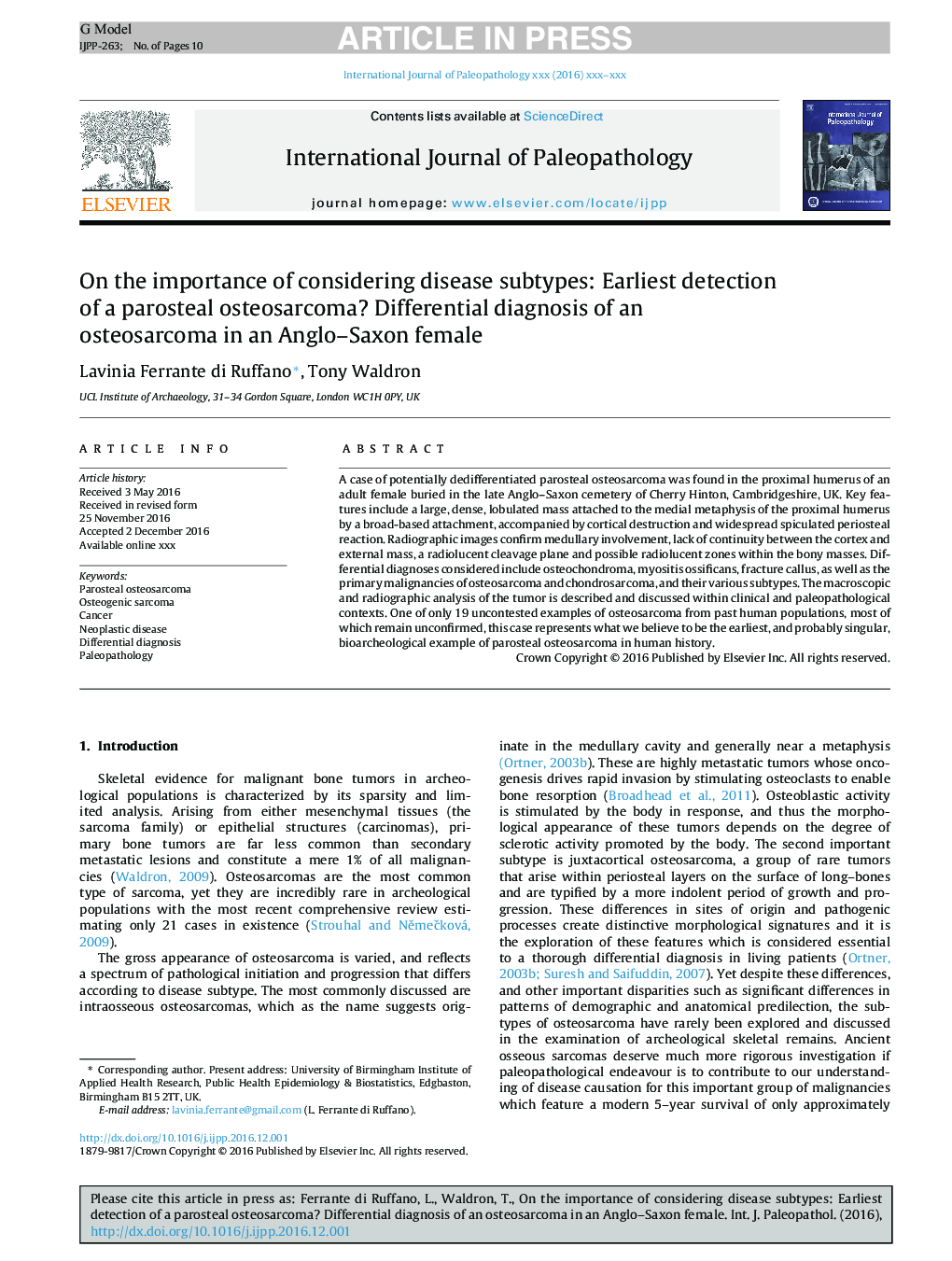| Article ID | Journal | Published Year | Pages | File Type |
|---|---|---|---|---|
| 6554768 | International Journal of Paleopathology | 2018 | 10 Pages |
Abstract
A case of potentially dedifferentiated parosteal osteosarcoma was found in the proximal humerus of an adult female buried in the late Anglo-Saxon cemetery of Cherry Hinton, Cambridgeshire, UK. Key features include a large, dense, lobulated mass attached to the medial metaphysis of the proximal humerus by a broad-based attachment, accompanied by cortical destruction and widespread spiculated periosteal reaction. Radiographic images confirm medullary involvement, lack of continuity between the cortex and external mass, a radiolucent cleavage plane and possible radiolucent zones within the bony masses. Differential diagnoses considered include osteochondroma, myositis ossificans, fracture callus, as well as the primary malignancies of osteosarcoma and chondrosarcoma, and their various subtypes. The macroscopic and radiographic analysis of the tumor is described and discussed within clinical and paleopathological contexts. One of only 19 uncontested examples of osteosarcoma from past human populations, most of which remain unconfirmed, this case represents what we believe to be the earliest, and probably singular, bioarcheological example of parosteal osteosarcoma in human history.
Keywords
Related Topics
Life Sciences
Biochemistry, Genetics and Molecular Biology
Physiology
Authors
Lavinia Ferrante di Ruffano, Tony Waldron,
